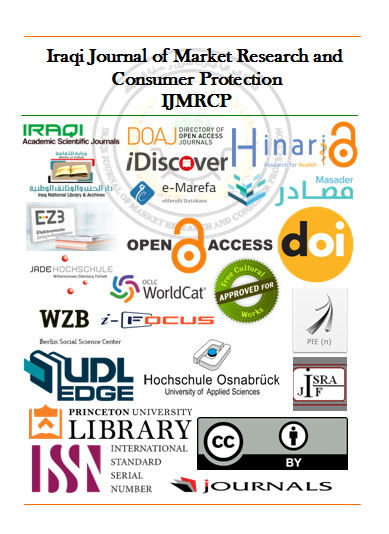SYNTHSIS A HIGHLY SENSITIVE MOLECULARLY IMPRINTEND POLYMER AS AN ELECTROCHEMICAL SENSOR FOR THE DETERMINATION OF AMLODIPINE IN PHARMACEUTICAL SAMPLES
SYNTHSIS A HIGHLY SENSITIVE MOLECULARLY IMPRINTEND POLYMER AS AN ELECTROCHEMICAL SENSOR FOR THE DETERMINATION OF AMLODIPINE IN PHARMACEUTICAL SAMPLES
Keywords:
Molecularly imprinted polymer, Amlodipine, Isothermal process.Abstract
This paper demonstrates the synthesizing and storage of molecularly- imprinted polymers (MIP) at room temperature using bulk polymerization of amlodipine (AD) is characterized by high sensitivity, low costs and high stability. The research used 0.99:6:20 mmol ratios of template, monomer, and cross-linking agents for the polymerization in order to ensure an appropriate adsorption capacity. A functional monomer tripolyphosphate with cross-linking ethylene glycol dimethyl acrylate was attained by creating MIP for amlodipine as AD-MIP that could be characterized using a UV-VIS spectrophotometer at 238 nm, Fourier-transform infrared spectroscopy (FTIR) and scanning electron microscopy (SEM). Mass spectrometric (MS) detection may use tritolylephosphate to determine amlodipine levels in pharmaceutical preparations. The GC/MS methods developed in this study are accurate, sensitive, and precise and can be easily applied to (AMADAY/India, NORVASC/U.K.) tablets in pharmaceutical preparation the elution process was applied to the template (AD) from the AD-MIP developed cavities caused by using pyrogenic solutions of methanol, chloroform, and acetic acid (70:20:10, v/v). The maximum adsorption capacity of AD-MIP was 0.263 µmol/g, and the ratio of template to monomer was 1:1 in adherence to the Langmuir isotherm model. A solid-phase extraction (SPE) syringe packed with molecularly imprinted polymers (MIPs) was used to selectively separate and pre-concentrate AD. from aqueous solutions and estimations of Amlodipine.
Published
Issue
Section
License
Copyright (c) 2025 Iraqi Journal of Market Research and Consumer Protection

This work is licensed under a Creative Commons Attribution 4.0 International License.





